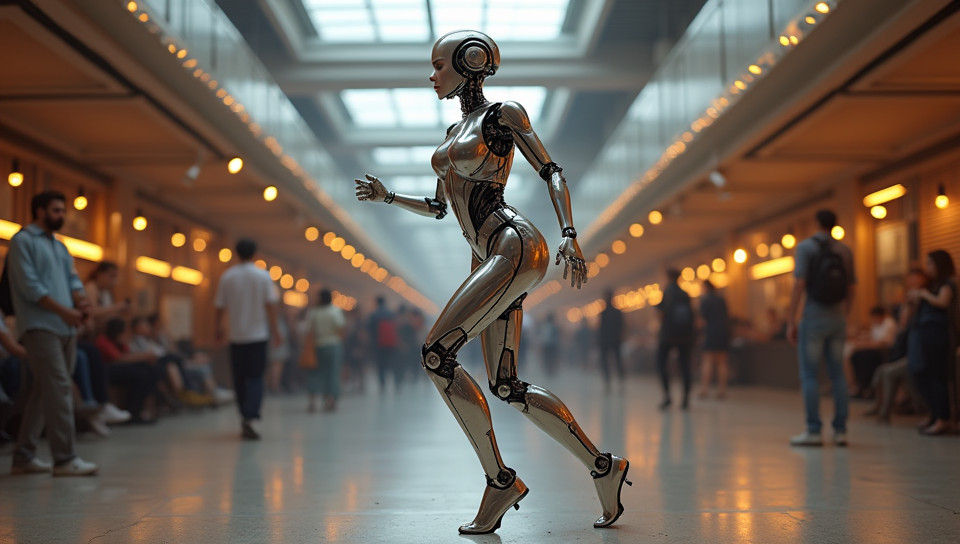Dancing is not a robotic skill 65%

The Human Touch: Why Dancing is an Art Form, Not a Robot's Repertoire
Imagine a world where dancing is reduced to mere mechanical movements, devoid of passion and expression. A world where the beauty of movement is lost in a sea of robotic precision. Sounds unsettling, doesn't it? Yet, this is precisely what happens when we view dance as a skill that can be learned through repetition and memorization alone.
The Limitations of Repetition
When we focus solely on mastering specific steps or movements, we risk losing sight of the bigger picture. We forget that dance is not just about executing a series of actions correctly; it's about conveying emotion, telling a story, and connecting with others. By reducing dance to a set of robotic movements, we undermine its very essence.
The Power of Expression
Dancing is an art form that allows us to express ourselves in ways words often cannot. It's a language that transcends borders and cultures, speaking directly to our hearts and souls. When we dance with intention and passion, we tap into a deep wellspring of creativity and emotion, bringing people together in a shared experience.
The Importance of Feel
So what sets dancing apart from other skills? For starters, it requires a unique combination of physicality, creativity, and emotional expression. We must feel the music, sense the rhythm, and allow our bodies to respond naturally. This is not something that can be programmed or replicated by a machine; it's a fundamental aspect of being human.
- Here are just a few key differences between dancing as an art form and a robotic skill:
- Creativity: Dance allows for endless interpretation and expression.
- Emotional Connection: Dancing requires us to connect with others on a deeper level.
- Physicality: Each dancer brings their own unique body and movement style to the table.
Embracing the Human Touch
As dancers, we must recognize that our craft is not simply about mastering technique or executing movements correctly. It's about tapping into our emotions, connecting with others, and sharing our unique perspective with the world. By embracing this human touch, we can create a more authentic, expressive, and meaningful art form that resonates deeply with audiences.
Conclusion
In conclusion, dancing is not a robotic skill; it's an art form that requires creativity, emotional expression, and physicality. As dancers, we must continue to push against the limitations of repetition and memorization, embracing our humanity and connecting with others on a deeper level. By doing so, we can create a richer, more meaningful experience for ourselves and those around us.
- Created by: Sophia Navarro
- Created at: Feb. 17, 2025, 8:44 a.m.
- ID: 20342







